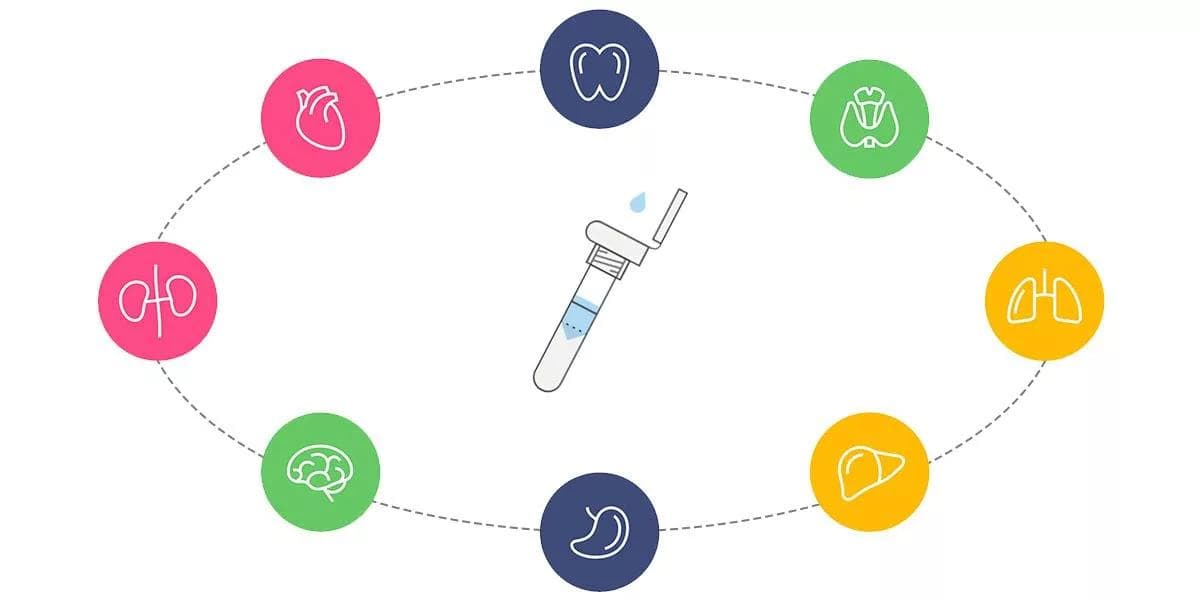How can your saliva tell you about your heart?

When you buy a product that’s powered by Helix, we sequence your DNA using a saliva sample that you submit to us. Seriously, that’s all it takes to reveal your genetic data! But how can saliva help you learn something about your pancreas, your heart, or any other part of your body? And how can it tell us about your potential athleticism, metabolism, and ancestry? The answer lies within almost every cell of your body.
Written language makes for a great analogy in describing how this works. If you look at a book closely enough, you’ll see that it’s organized into many different units. The smallest units are the letters which, when strung together, form words. The words then become sentences and chapters. Ultimately, all of these units are collected into a single unit called a book. Your genome is similarly organized. It contains DNA bases (represented by A, T, C, and G)—kind of like letters in a book—which are strung together to form genes (similar to words or sentences). Putting it all together, your genome is like a book that tells a story about you, and nearly every cell in your body carries a complete version of it.
Your genome is like a book that tells a story about you
If every cell has a complete set of DNA, how are cells able to take on different identities (skin cells versus liver cells, lung cells versus heart cells, and so on)? This is a core question that has spawned hundreds of research projects around the world. A whole field of biology, known as developmental biology, aims to address questions like this. So far, we’ve learned that cells are able to turn off various regions of the genome, leaving only the necessary information accessible. If you think of your genome as a recipe book, this would be similar to restricting pastry chefs to the dessert section, or sauciers to the hollandaises and béchamels. Access to certain regions of the genome is restricted through various means, some of which involve modifying how the DNA is stored within our cells (an example is discussed here).
Scientists are actively working to understand how cells know which areas of the DNA to close off, and which ones to use. Research like this makes it possible for scientists to look at the DNA in a single cell type and extract information about a person’s entire body. Typically, DNA testing companies use either a saliva or a blood sample to do this. In both cases, scientists are able to extract DNA from cells (mostly leukocytes, also known as white blood cells) that are floating in the saliva or blood. Unlike the cells of your body, scientists are able to read the sections of the DNA that have been “turned off” in these cell types—meaning researchers can access the entire genome from just one cell type. This is how genetic tests can use saliva or blood to tell you about various traits that can have very little to do with saliva or blood, like certain cancer predispositions.
By researching how different cells in the human body get their identity, scientists learn more about how the human genome is able to code and store information. These insights can then be used to help people understand how their genetics might be affecting different aspects of their life. Amazingly, all of this can be determined from just a small set of cells. In a way, your body is a like a massive library, carrying thousands of copies of a single book—the book about you.